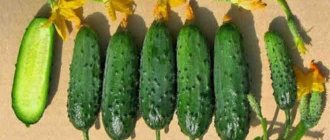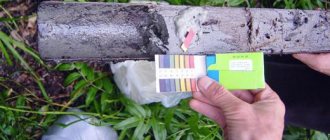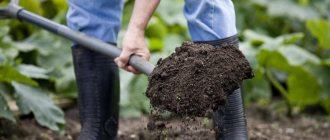The condition of the soil is one of the main conditions for the development and productivity of cucumber. The crop begins to bear fruit early, so by the time of planting the soil must contain a complex of all minerals and nutrients necessary for fruit set. Otherwise, it is impossible to achieve a high yield.
Not only fertility is important, but also the structure of the soil. The weak root system of the cucumber does not tolerate heavy soils. It should be taken into account: everything that is introduced into the soil stays in it for a long time, so the process requires the right approach.
What kind of soil do cucumbers like?
The main requirements of the crop for the mechanical composition of the soil are high air permeability and moisture holding capacity, so it is recommended to plant cucumbers on light and medium loams, which have good aeration of the root system, evenly distribute and retain moisture.
For good development, cucumber needs mineral and organic nutrition, which comes from the soil immediately after planting, so the soil must have a high humus content and an optimal ratio of macroelements.
Important minerals:
- Nitrogen. With its deficiency, the growth of the above-ground part and the development of roots slows down.
- Potassium. Mineral deficiency weakens plants and reduces resistance to disease and cold.
- Phosphorus. If there is a shortage, plant growth and fruit formation slow down.
- Magnesium. The leaves turn yellow, become brittle, and fall off. Plant growth and fruit development slows down.
The culture is demanding on the reaction of the soil solution and does not tolerate acidification. The optimal acidity level is pH 6.2-6.8.
Cucumbers love warm soil. Planting seedlings and sowing seeds is possible only after the soil has been warmed to 18°C. When the temperature drops to 14-15°C for 3-5 days, the cucumber roots stop developing.
This can lead to plant death. Surviving cucumbers will be weak and susceptible to disease. Productivity will be greatly reduced.
Cucumbers develop better if the soil is 2-3°C warmer than the air. The average daily air temperature for cucumber is 16-32°C. These indicators are also used to control the soil.
Soil moisture should be 75-85%. Subsequently, to control soil moisture, take a handful of soil from the root layer and squeeze it tightly in your fist. If water comes out, the humidity level is more than 80%. If the lump retains fingerprints, it means the humidity is more than 70%. The lump crumbles - less than 60%.
What determines the harvest of cucumbers?
For a good harvest, cucumbers need a temperature of +22..27 degrees and sufficient soil and air humidity. This culture also loves fertile soil, rich in humus. To obtain a good harvest, the following techniques are used:
- Installing a barrel of fermented grass in a greenhouse or greenhouse, which releases carbon dioxide, accelerates the formation of ovaries.
- For open ground, use trellises, especially for bunched cucumbers.
Barrel with fermented grass to produce carbon dioxide
Determination of soil mechanical composition
To determine the type of soil, you can use a simple method that does not require special equipment. To do this, you need to take a handful of earth and lightly moisten it with water so that it does not wring out. Mash and form a lump. Then roll a cord with a diameter of 3 mm in your palms and roll it into a solid ring.
Depending on the condition of the cord, you can determine the type of soil:
- disintegrates quickly - sandy loam;
- crushes during rolling - light loam;
- continuous, but when rolled into a ring it breaks up - medium loam;
- continuous, but small cracks form on the ring - heavy loam;
- solid, solid ring - alumina.
Light and medium loams
The most optimal soil types for growing cucumbers. The mechanical composition of light loams does not need to be structured. In the fall, manure is added to medium loams at a rate of 5-6 kg per 1 sq. m. m.
Sandy loam
This type of soil warms up quickly, has intense aeration and high water permeability. In addition, sandy loam is easy to process, and the conversion of organic matter into humus occurs at an accelerated rate.
The disadvantages of soil for growing cucumbers are rapid cooling at night and leaching of minerals from the root layer. This can be corrected by adding fresh manure or compost in the fall, 10 kg per 1 sq. m. m.
Alumina and heavy loams
These types of soil are not suitable for growing cucumbers. They do not warm up well and practically do not allow air and moisture to pass through. This is detrimental to culture.
When oxygen access to the roots is limited, cucumbers begin to shed their ovaries, practically do not develop and gradually dry out. Heavy soils must be loosened.
The best option is to apply fresh straw manure. This should be done in the fall so that it has time to decompose and turn into humus. 10-15 kg of manure per square meter is applied to uncultivated soils. m. When re-applying (recommended every 3-4 years), 5-6 kg per square meter is sufficient. m.
Manure is covered superficially. When buried deeply, it does not decompose and partially turns into peat, in which the bacteria necessary for plants do not develop.
Sandstones
This type of soil is not suitable for growing cucumbers. It does not retain moisture, and minerals are quickly washed out of the root layer. It warms up quickly, but also cools down during the night temperature drop.
To improve the soil per 1 sq. m. contribute:
- half-rotted manure or compost 1.5 -2 buckets;
- peat 1 bucket.
A labor-intensive, costly, but very effective method is claying the soil. To do this, in every sq. m. add 1-2 buckets of powdered clay. It is combined with manure or compost. After adding any baking powder, the area is dug up. The events are carried out over 2-3 years.
Peaty marshy
In Russia, this type of soil is found in the West Siberian Plain and in its natural form is unsuitable for growing cucumbers. It is excessively moist and fibrous, there are no conditions for the decomposition of plant residues, so the peat becomes very sour. Peaty-swampy soil is characterized by a light brown color.
First you need to dry the area. To do this, in the spring, grooves are dug along the perimeter of the site so that the water is drained outside the garden. By the end of summer, the area will be dry, and you can begin to improve the soil.
For 1 sq. m. contribute:
- powder clay 1 bucket;
- river sand 0.5 buckets;
- lime from 0.3 to 1.4 kg depending on acidity.
The area is dug up to a depth of 20 cm. Rotted manure, humus or bird droppings are added at a rate of 1 kg per square meter. m. More organic matter is not required.
Peat contains a lot of organic substances, and manure in this case is used only to start the processes of its decomposition.
Work on introducing these components is carried out constantly from year to year. Until the soil acquires optimal physical properties that are comfortable for plants. In addition to the main fertilizers (nitrogen, phosphorus, potassium), copper and boron are added annually.
Fertilizer use
Diseases of cucumbers in a greenhouse
It is not enough to know what kind of soil cucumbers like; it must be fertilized. Fresh manure is considered the ideal fertilizer for this crop. If you can't get it, you can use other components:
- thin tree or spruce branches;
- hay;
- crushed reeds;
- seaweed;
- sawdust;
- bark of tree;
- urea;
- lime, etc.
All components are applied in a certain sequence depending on the composition of the soil on the site.
Ideally, the soil for cucumber seedlings should resemble a layer cake, which consists of the following components: pine sawdust, humus, peat, sawdust, manure, black soil. All layers are laid out in even layers. This composition of soil for cucumbers will provide them with all the necessary elements.
Acidity regulation
Acidic soil is typical for low-lying areas with stagnant spring water. Acidity can also increase after seasons with increased rainfall, which wash away calcium and magnesium. Hydrogen ions begin to predominate in soil particles, increasing its acidity.
In such areas, plantain, wild rosemary, horsetail, speedwell and sorrel grow rapidly. When digging up the soil at a depth of 10-15 cm, you can find a light-colored layer resembling ash.
The easiest and most inexpensive way to determine soil acidity is to use litmus paper. It can be purchased at any garden store and pharmacies.
To determine the acidity of the soil, mix a semi-liquid solution of soil and distilled water, and immerse a strip of litmus paper in it for 2-3 seconds. To calculate acidity values, it is compared with the accompanying color scale.
Calcium carbonate is used to reduce soil acidity. It is found in ground limestone, chalk, cement dust, wood ash, dolomite and bone meal.
For the primary regulation of acidity, it is better to use ground limestone. Norms for its application per 1 sq. m. for various soil types (pH < 4.5 / pH 4.6-6.0):
- sand 400/100 g;
- sandy loam 600/150 g;
- loamy 800/350 g;
- aluminas 1100/500 g;
- peat-swampy 1400/300 g.
Cucumbers are very sensitive to liming, so measures to reduce soil acidity are best carried out under the previous crop. As a last resort - in the fall.
In the future, to maintain acidity at the required level, wood ash is used, which also serves as a good fertilizer.
How to Test Soil Acidity
Before planting seedlings in the soil, it is necessary to check its acidity. At home, the easiest way to carry out the reaction is with ordinary table vinegar. To do this, you need to take a handful of earth and place it on a glass bowl. It is better not to use iron utensils, as this may give a false result.
Water the soil with vinegar. If the medium is neutral or alkaline, then a reaction will occur and hissing will occur and bubbles will appear. Everyone has had this reaction at least once in their life when preparing pastries or pancakes. If no reaction occurs, then it is acidic and needs to be limed. For these purposes, dolomite flour and ground limestone are used. This should be done in the fall. Therefore, a place for future cucumbers must be chosen after harvesting.
For other traditional methods, see the table:
| Indicator plants | Soil reaction and suitability for cucumbers |
| Horse sorrel, horsetail, crowberry, blueberry, mosses, meadow grass | High acidity. Strong liming required. |
| Lingonberry, wild rosemary, sorrel-leaved knotweed, mint, bearberry, marsh goldenberry, cat's paw | Medium acidity. Requires deoxidation. |
| Broadleaf bellflower, hairy sedge, kupena, shieldweed | Weak acidity or neutral soil. Suitable for cucumbers. |
| Coltsfoot, yarrow, chamomile, meadow clover, wild strawberry, quinoa, nettle, shepherd's purse, sow thistle, sowweed | Neutral soil. Suitable for cucumbers. |
| Hairy sedge, goosefoot, wormwood, vetch, alfalfa, meadow arzhanets, bromeless brome | Slightly alkaline soil. Suitable for cucumbers. |
If you pour vinegar into alkaline soil, a reaction should occur in the form of hissing with bubbles.
How to prepare soil for planting cucumbers
Soil preparation and arrangement of beds for greenhouses and open ground are the same. The only difference is in the preparatory work.
Greenhouse treatment
Most gardeners do not have the opportunity to observe crop rotation in the greenhouse, so after harvesting, the depleted soil with manure that has rotted over the summer is completely removed from the room and distributed on the site of future beds. The exception is places where pumpkin crops are planted.
If for some reason a complete replacement of the soil is not possible, it must be disinfected.
Options:
- Spill the soil with boiling water and cover the surface of the bed with film for a day. After this, the ground is dug up and harrowed. The procedure is repeated after 3 days. Conducted in the spring.
- Application of biofungicides. Spraying solutions of drugs onto the soil: Trichodermin, Fitosporin M, Phytocide, Bordeaux mixture, Pentafog. Processed in autumn and spring.
- Adding bleach 200 g per 1 sq. m. and digging up the soil. Apply 6 months before planting cucumbers.
- Spill the soil with a 2% formaldehyde solution (40%), cover the surface with film for 3 days. The soil is dug up and harrowed. The event is held 2-4 weeks before planting.
In the fall, all plant residues are collected and burned. The internal surfaces of the greenhouse are washed with a 2% formaldehyde solution (40%). It is advisable to fumigate the greenhouse with sulfur.
Open ground
In open ground, you need to constantly change the place for growing cucumbers, returning the crop back only after 3-4 years. The best predecessors are tomatoes, cabbage, peas. Do not plant after pumpkin crops.
A place for the garden bed is selected that is well-lit, protected from drafts and cold northern winds. In the fall, the site is dug up, removing all plant waste.
When do you need green manure?
In a greenhouse and in open ground, when there is no replacement soil, you can sow green manure plants. The best option is white mustard. It should be sown immediately after harvesting the cucumber plants. After 3-4 weeks, a sufficient vegetative mass is formed, which is embedded in the soil to the depth of a spade bayonet.
Mustard will destroy and remove from the soil most of the cucumber root secretions that have accumulated over the season.
In addition, it produces a kind of compost in the soil, rich in proteins and minerals. A system of root tubules is created in the soil, which improves its mechanical properties.
Dead mustard roots attract worms and microbes, which produce nitrogen during their life processes. Additionally, the soil is protected from erosion and swelling.
In the video, the author shows his method of preparing soil and beds for sowing cucumbers.
Arranging a garden bed
Cucumber is one of the few plants that can and is even recommended to be grown in fresh manure. When laying manure, you need to take into account that the root layer of plants reaches a depth of 20 cm. Therefore, on the surface of the manure there should be a 25-30 cm layer of fertile soil.
In such a bed, a heat-loving crop is not afraid of cooling of the roots when the air temperature drops sharply at night or insufficient heating of the soil when planting early in greenhouses.
To arrange a garden bed in a selected area, mark its boundaries. The width should be such that the gardener can freely reach the plants with both hands. You cannot even lean on boards laid on top of the beds. Cucumber does not tolerate the slightest compaction of the soil.
A trench 50-60 cm deep is dug across the area of the bed. In the spring, two weeks before planting, it is filled with fresh manure. Cover the top with garden soil and fertilize.
If it is very cold, the bed is covered with film for intensive heating. This measure is mainly needed only in unheated greenhouses and regions with late summer.
Adding minerals
Fertilizers for cucumbers begin to be applied two weeks before transplanting seedlings or sowing seeds.
For 1 sq. m of cucumber ridge are added:
- rotted manure 25 kg or compost 10 kg;
- superphosphate 40 g;
- potassium sulfate 40 g;
- magnesium sulfate 15 g or potassium magnesium 60 g.
Fertilizers are evenly scattered on the soil surface and the bed is dug up. After this, pour water at a rate of 10 liters per 1 square meter. m.
A week later, 30 g of ammonium nitrate is added per 1 square meter. m. The bed is dug up again and spilled with water. After this, we can assume that the soil is completely ready for planting cucumbers.
Preparing a greenhouse for planting cucumbers
To obtain high yields, it is not necessary to know all the rules of cultivation from A to Z. You need to take care of the cleanliness of the greenhouse, since it is this factor that will provide the plantings with protection from pests and diseases. It is necessary to carry out disinfection and cleaning in the fall in order to prevent harmful organisms from developing and multiplying, and also to prevent bacteria from entering the spore phase (in this form, protozoa survive an unfavorable time and acquire maximum resistance to any external influence). Disinfection of greenhouses, greenhouses and soil should begin immediately after harvesting.
Read about greenhouses for cucumbers here.
The room should be well lit and heated
Remove debris, plant debris (tops, shoots, roots) and other foreign objects from the beds immediately. It is better to burn everything to avoid the spread of infections. Under no circumstances leave any parts of last year’s crops!
Disinfection
After cleaning the greenhouse, it is necessary to begin disinfection. It is necessary to treat both the soil and all glass, metal and wooden parts of the building. The soil is impregnated with a weak solution of copper sulfate to a depth of no more than 5-7 cm. Treat the greenhouse structure with a well-infused solution of bleach (300 grams per 10 liters of water, let stand for 4-5 hours). Use the precipitate that forms in the solution for wooden parts and especially for the cracks between the boards. Spray the glass and crossbars with chlorine-lime liquid.
How to do dry processing
We move on to this stage immediately after disinfection. First of all, let the greenhouse dry out; do not add new soil and fertilizers until the boards are thoroughly dry. Also, the most useful thing would be to treat the room with a sulfur smoke bomb: you need to set it on fire and leave it in a closed greenhouse for a few minutes (or until it burns completely, this is at your discretion). After the procedure, ventilate the building. It is advisable to remove the top layer of soil to a depth of 6 cm.
Disinfection is carried out with a sulfur smoke bomb. The price is 65 rubles. per pack.
When using chemicals, do not forget about personal protective equipment. Be sure to carry out the procedure wearing rubber gloves and a mask. Do not stay in an unventilated greenhouse for more than 10 minutes after treatment.
Preparing soil mixture for seedlings
The strength of seedlings largely depends on the quality of the soil. The simplest option is to purchase ready-made soil adapted to the requirements of pumpkin crops.
Ready-made soils consist of a mixture of different types of peat, turf soil, river sand, vermicompost with the addition of all the necessary minerals. They are completely processed and disinfected, they do not contain weed seeds, pest larvae and fungal spores.
Ready soils:
- “Living Earth” soil No. 2;
- "Gumimax";
- "Peter Peat" soil for cucumbers;
- "Bood-soil" No. 2;
- "Hera";
- "Fasco".
To grow seedlings, you should not purchase peat soils. They are poorer in composition and are only suitable for filling planting containers or adding mature plants to the tree trunk.
To prepare the soil mixture yourself, it is necessary to prepare and store the components during the summer season.
Several soil options:
- humus, lowland peat 1:1;
- turfy soil, decomposed peat, manure humus, river sand 3:3:3:1;
- lowland peat, humus, rotted sawdust 3:1:1;
- garden soil, manure humus, peat, rotted sawdust 2:1:1:1.
For a 10 liter bucket, add 4 tbsp to any of these mixtures. l. wood ash, 20 g superphosphate, 1 tsp. urea and potassium sulfate.
Homemade soil mixture must be disinfected. To do this, it is shed with a 1% solution of potassium permanganate or treated with biological fungicides. Recommended drugs: “Fitosporin”, “Trichodermin”, “Planriz”, “Extrasol”.
The best predecessors for cucumbers
Cucumbers need to change their growing location every few years. The more often you change, the better the harvest will be. The best predecessors are considered to be onions, cabbage, tomatoes, potatoes, rye, oats, and clover. You cannot plant cucumbers after growing melons, pumpkins, cucumbers, and squash.
This is because these crops feed on the same minerals as cucumbers, thus depleting the soil. They also have common diseases, which can remain in the soil for the next season and infect new plants.
Tomatoes are considered one of the best predecessors for cucumbers.
Soil for growing cucumbers
In boxes and barrels
The limited space of boxes, barrels or other containers requires a slightly different approach to the composition and preparation of the soil.
When using drums and other tall containers:
- on the bottom lay a layer of pebbles, broken bricks, strong branches for 1/3 of the container;
- put hay, sawdust and tops on top, sprinkle with humus or rotted manure - after laying this layer, 40 cm remains to the edge of the container;
- poured with EM preparations for better reheating;
- mix leaf soil and humus (1:1) or peat and humus (1:1);
- cover with a 20 cm layer.
The container is covered with film and left to overheat for two weeks. Add fertile soil so that 15 cm remains to the edges of the sides of the container. Two weeks before planting, the soil is fertilized for cucumbers.
On balconies and window sills
On balconies and window sills, cucumbers are grown in containers with a volume of at least 5-7 liters (depending on the variety). At the bottom of the pots there must be holes for water drainage and a drainage layer 5 cm high. A layer of fertile soil must be at least 20 cm.
Ready-made and homemade soils recommended for seedlings are well suited for growing cucumbers in containers. They contain a large amount of nutrients, which is especially important when the root environment is limited.
Cultivated plants, including cucumbers, remove almost all nutrients from the soil during the season. She's getting exhausted. Salinity, increased acidity and severe drought sharply reduce the level of soil bacteria, and hence the formation of humus, so the soil must be constantly monitored, not limited to seasonal fertilization.
Soil requirements
First you need to choose the area where the cucumbers will grow. It is advisable that it be turned to the south, because these vegetables love a sunny place without drafts. It is necessary to take into account what previous crops were grown here. It’s good if it was potatoes, tomatoes, cauliflower, root vegetables, legumes. You should not plant greens in the place where zucchini, squash, and eggplant grew. After them, microorganisms accumulate in the soil, which will then lead to plant disease.
The land for planting cucumbers should be:
- loose;
- structured;
- fertile.
Therefore, in open areas it is better to choose light loamy or sandy soils that have good water permeability. It is important that they contain a large amount of humus. Cold peat-bog soils are considered completely unsuitable for growing cucumbers. They contain little phosphorus, potassium, magnesium and other trace elements. Peat soil warms up slowly in the spring and cools quickly in the fall.
Acceptable soil acidity for cucumbers is 6-7 units. At a pH level of 6-6.1 units, the greatest yield of the plant is observed. After all, such acidity levels contribute to the formation of the maximum number of female flowers.
Cucumbers prefer moist soil, so they require frequent watering. 75-85% soil moisture is the optimal indicator for cultivating the crop.
The soil temperature before planting cucumbers is also important. It should be approximately equal to the air temperature or 2-3˚C lower. The best indicator for seed germination is 25-28˚C, at which seedlings appear in 3 days. At temperatures below 14˚C, the crop stops growing. Indicators above 40˚С will be critical.
Natural organic fertilizers
It is better to apply manure in the fall so that it has time to turn into humus. If the soil is heavy clay, then it must be fertilized no later than 30-40 days before planting cucumbers in the soil. Manure has a large amount of large minerals. Nitrogen, phosphorus, calcium, potassium - all these substances are contained in it. They are absorbed into plants and provide an excellent harvest. It is necessary to apply about 6-9 kg per square meter of soil in the autumn.
Cucumbers need different types of fertilizing
An excellent option would be to use the place where the compost pit was previously located. In such a place, cucumbers will grow in open ground. Humus will release a large amount of heat and energy. If you cover the seedlings on top with a thick film, this will create a greenhouse effect. Moreover, humus releases a large amount of nutrients suitable for cucumbers.
Mineral fertilizers for growing crops
Ash is very similar in composition to potash fertilizers and can serve as an excellent replacement. They usually add 200 grams per square meter of land. You need to add ash in the spring, after loosening the soil.
Complex fertilizers created artificially are widely used in gardening. They have a wide range.
You need to decide which fertilizer is best on an individual basis. A consultant in a specialized store will help resolve this issue. You should not buy fertilizers in markets or from hand, since the exact composition of such liquids and powders is not known. This can harm future plants or spoil the soil.
The composition of ash is similar to potash fertilizer
Video
Preparing soil in a greenhouse. The correct soil composition is the key to a rich harvest!
HOW TO PREPARE? CUCUMBER BED IN AUTUMN. How to grow cucumbers. Cucumber bed.
WHAT SOIL DO CUCUMBERS LIKE? Olga Chernova.
DO THIS WHEN PLANTING CUCUMBERS! WHAT TO PLACE IN THE HOLE!
CUCUMBERS. WHAT SHOULD I TREAT THE SOIL BEFORE PLANTING? Olga Chernova.
PREPARING THE SOIL FOR CUCUMBERS
How to grow cucumber - land preparation part 1
How to prepare the ground for planting. Optimal soil for seedlings
Preparing greenhouses in the fall for planting cucumbers and tomatoes for the next season!
Spring soil preparation. Digging. What rules must be followed
HOW TO PREPARATE THE BEST SOIL FOR SEEDLINGS SECRETS OF GARDENERS AND GARDENERS
Growing cucumbers. How to prepare a garden bed for planting cucumbers
We prepare the soil for seedlings ourselves!
WHAT TO ADD TO THE HOLES WHEN PLANTING CUCUMBERS
Preparing soil in a greenhouse.
CUCUMBERS. IMPORTANT POINTS IN PREPARING SEEDLINGS AND PLANTING INTO THE GROUND.
Soil for planting seeds - we get rid of harmful microorganisms! Mild soil disinfection.
HOW TO PREPARE A GREENHOUSE FOR A BIG HARVEST! MAIN SECRETS!
Cucumber care
In order to increase productivity, cucumbers need to be looked after.
After the cucumbers have sprung, you need to check whether all the planted seeds have sprouted; if not, then it is advisable to sow these places with new seeds or replant seedlings.
After the first true leaves appear on the seedlings, thinning needs to be done.
Final thinning is carried out in the 2-3 leaf phase.
When thinning, the plant must be pinched to remove it, and pulling it out is highly discouraged, so as not to damage the root system of the remaining plants.
At the same time, the first weeding and light hilling are carried out, because the leaves have already formed and you will not be able to distinguish a cucumber from a weed.
Spring tillage to plant plants
The soil needs to be loosened to saturate it with fresh oxygen. You can start from the end of May. It is also necessary to fertilize it with natural organic or mineral fertilizers. If this was done in the fall, then there is no need to fertilize it in the spring.
We must remember to monitor the growth of weeds in the prepared area.
They will simply process all the added beneficial minerals, so the cucumbers may not have enough. To do this, you need to carry out periodic weeding. The smaller the plant, the less fertilizer it consumed.
Ways to improve the soil
Cucumbers love well-fertilized soil. Therefore, preparation of beds for planting this crop in open ground should begin in advance.
in autumn
For autumn digging, add up to 8 kg of manure, 10 g of a mixture containing potassium and phosphorus (dosage is indicated per 1 sq. m.). The digging depth is from 25 cm. Do not break up the earthen clods in the fall.
It is recommended to add organic matter to cucumbers no later than mid-October. It allows you to saturate the soil with useful substances, preparing it for the spring sowing of vegetables. In addition, organic matter increases the effectiveness of mineral complexes introduced in parallel or a little later.
Note : If the soil is light, the use of manure is postponed until spring.
Do not neglect the use of ash. This natural mineralizer supplies the soil with many macro- and microelements. It contains potassium and phosphorus in a form convenient for absorption, and therefore quickly passes into the soil.
Experienced gardeners advise sowing cucumbers in areas where thorough liming was carried out 3 years ago.
in spring
If the cucumber beds have been well fertilized since the fall, it is recommended to apply fertilizer in the spring about 7 days before planting.
Grooves are made in the garden bed, up to 40 cm deep, and filled with rotted manure or compost at the rate of 5 kg per square meter. m. They are sprinkled with fertile soil on top. Then the ground is loosened and covered with film for several days.
Note : Instead of manure, compost, hay, rotted leaves or sawdust are quite suitable.
In the spring, when digging, mineral complexes are also added. For example, a mixture of Superphosphate (45 g), saltpeter (20 g), potassium salt (30 g).
From the moment of spring digging until sowing, the soil is loosened and weeds are removed.
If the cucumber beds are located in an open area, not protected from drafts, it is recommended to plant natural barriers from the wind - sunflowers, corn.
Experienced gardeners constantly improve the soil. This is especially true for crops that require special attention and care, like cucumbers.
Mulching
Peat, hay, rotted manure, and old sawdust are perfect as mulch. They will warm the root system of the vegetable crop, supply the soil with useful substances, and retain moisture from evaporation. In addition, mulch prevents the growth of weeds and allows cucumbers to grow and gain strength unhindered.
Increase in carbon dioxide content
This mainly applies to growing cucumbers in greenhouses. The plant loves carbon dioxide very much, and therefore it is recommended to place a barrel with fresh mullein in the greenhouse. In open ground, the content of this substance is increased by mulching the beds with fresh manure.
Fertilization with milk
Once every 14 days, cucumbers are fed with a milk solution (1:10). This composition promotes rapid rooting of seedlings and accelerates their growth.











